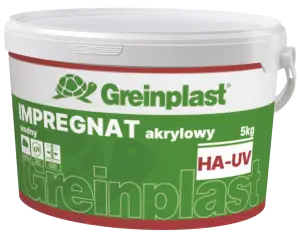

Used in the hydrophobisation of construction material surfaces of the following types: walls made of ceramic and silicate brick, cellular concrete, clinker brick (including clinker joints), or concrete. The preparation may also be used to reduce the absorbability of thin-layer mineral plasters (with the exception of those applied in thermal insulation systems), cement and cement-lime plasters, claddings made of porous natural stones (such as sandstone), as well as of synthetic stones made of mineral binding agents. It is also useful in the impregnation of paving setts and ceramic roof tiles.
Packaged in 5, and 1l containers.
The preparation should be stirred or shaken before the application. During the application, use a roller, brush, a spraying device, water the surface or immerse in the working solution for ca. 5 minutes. On highly absorptive bases, repeat the procedure following the wet-on-wet” method, until their absorbability disappears (usually, impregnation should be repeated minimum twice). The full hyrophobisation effect, seen in the form of water beads present on the surface, is achieved within ca. 24 hours.
Show moreNew plasters should be impregnated 28 days after they are laid, whereas joint fillings should be impregnated after they have dried off completely. Do not impregnate in the rain. The temperature of the base and its surroundings during the application should be between 5°C and +30 °C. Enclosed spaces should be aired until the characteristic smell is removed. Before works are commenced, carefully secure all surfaces that are not going to be impregnated. Application tools should be washed with water directly after the completion of works.